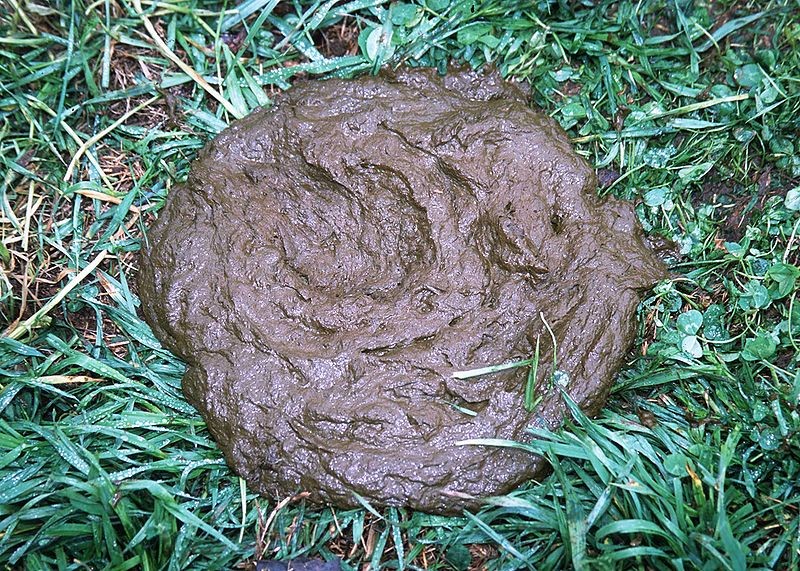
Nutrition
Aphodius prodromus, and other dung beetles, play an important role in agriculture and pasture animal health (Bertone 2004). These beetles capitalize on the wastes of others, literally! A. prodromus and several other Scarabaeidae beetles use bovine dung as a food source as well as a place to reproduce. Not only do these beetles recycle the soil, they also reduce the amount of dung, which in turn reduces the amount of flies that pester the pasture animals (Bertone 2004). These beetles are attracted to the dung by their keen sense of smell.
Composition of Dung: The essential nutrients in
dung include phosphorus, potassium, and nitrogen
(Pennington et
al.). Other components include ash, cell wall composite, also known as
hemicellulose, and the fibrous part of the plant that the animal
cannot digest, also known as cellulose
(Pennington et al.). Because not all
pasture animals eat the exact same things, these nutrients could
vary from location to location. The same goes for the soil
composition, not all soil is the same. But I will provide the most
common elements and nutrients in a typical soil sample.
digest, also known as cellulose
(Pennington et al.). Because not all
pasture animals eat the exact same things, these nutrients could
vary from location to location. The same goes for the soil
composition, not all soil is the same. But I will provide the most
common elements and nutrients in a typical soil sample.
Soil Composition: These include nitrogen, phosphorus, potassium, calcium, magnesium, and sulfur. There also could be some trace elements such as iron, manganese, zinc, boron, and molybdenum (Kelly-Lines 2004). Again, depending on the location and soil type, the levels of these nutrients will vary.
Acquisition of Food: Beetles of the same family and the same category of dung beetles have several mouth parts that make it possible to feed on dung. The mouth parts include a labrum (similar to a lip), a pair of mandibles (lower jaw), a pair of maxillae (upper jaw), a hypopharynx (aids in swallowing), and a labium (the floor of the mouth) (Miller 1961). The outer mouth pieces (the maxillae and labium) are coated in small fine hairs that prevent feces to become stuck to their mouths. These hairs are great and also aid as a cleaning mechanism for these beetles. Beetles of this same family, who are classified as leaf eaters, have a very similar mouth form. The main modification is due to the fact that dung beetles need to be able to eat the soft moist dung in their nutritious diet (Miller 1961).
Digestive System: We can study the digestive system in three main parts: the fore-gut, the mid-gut, and the hind-gut. The digestive system of beetles from the Aphodinae family contain a short pharynx and esophagus. These two things together comprise the fore-gut. Then there is a ventricle (stomach), which makes up the mid-gut. The hind-gut is made up of a posterior and anterior intestine. The food passes through the digestive system and is exposed to digestive fluids from the epithelium. Just like us, these dung beetles digest several different things such as undigested food residues, secretory products, bacteria, yeasts, and molds (Miller 1961).